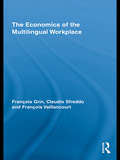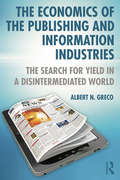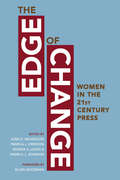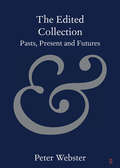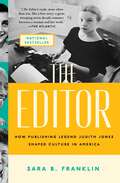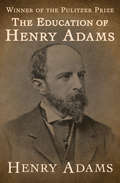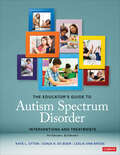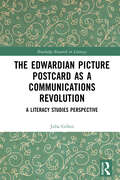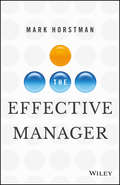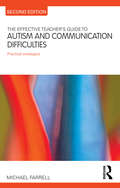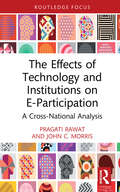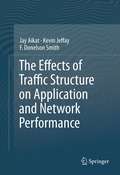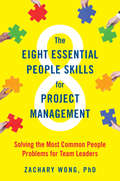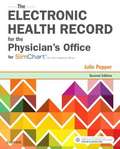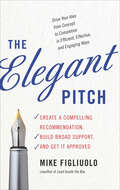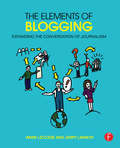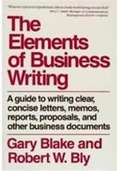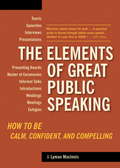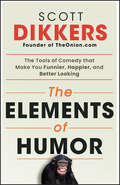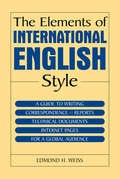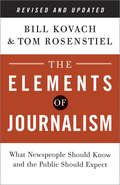- Table View
- List View
The Economics of the Multilingual Workplace (Routledge Studies In Sociolinguistics Ser.)
by François Grin Claudio Sfreddo François VaillancourtThis book proposes a path-breaking study of the economics of multilingualism at work, proposing a systematic approach to the identification and measurement of the ways in which language skills and economic performance are related. Using the instruments of economic investigation, but also explicitly relating the analysis to the approaches to multilingualism at work developed in the language sciences, this interdisciplinary book proposes a systematic, step-by-step exploration of the issue. Starting from a general identification of the linkages between multilingualism and processes of value creation, it reviews the contributions of linguistics and economics before developing a new economic model of production in which language is taken into account. Testing of the model using data from two countries provides quantitative estimations of the influence of multilingualism on economic processes, showing that foreign language skills can make a considerable contribution to a country’s GDP. These findings have significant implications for language policy and suggest strategies helping language planners to harness market forces for increased effectiveness. A technical appendix shows how the novel technical and statistical procedures developed in this study can be generalized, and applied wherever researchers or decision makers need to identify and measure the value of multilingualism.
The Economics of the Publishing and Information Industries: The Search for Yield in a Disintermediated World
by Albert N. GrecoBooks, scholarly journals, business information, and professional information play a pivotal role in the political, social, economic, scientific, and intellectual life of nations. While publications abound on Wall Street and financial service companies, the relationship between Wall Street’s financial service companies and the publishing and information industries has not been explored until now. The Economics of the Publishing and Information Industries utilizes substantive historical, business, consumer, economic, sociological, technological, and quantitative and qualitative methodologies to understand the people, trends, strengths, opportunities, and threats the publishing industry and the financial service sector have faced in recent years. Various developments, both economic and demographic, contributed to the circumstances influencing the financial service sector’s investment in the publishing and information industries. This volume identifies and analyzes those developments, clearly laying out the forces that drove the marriage between the spheres of publishing and finance. This book offers insight and analysis that will appeal to those across a wide variety of fields and occupations, including those in financial service firms, instructors and students in business, communications, finance, or economics programs, business and financial reporters, regulators, private investors, and academic and major public research libraries.
The Edge of Change: Women in the Twenty-First-Century Press
by Deb Price Ellen Goodman Margaret Sullivan Kathleen Carroll Dorothy Butler Gilliam Pamela J. Creedon Helen E Fisher Catalina Camia Paula Lynn Ellis Sharon Grigsby Carol Guzy Kirsten Hampton Cathy Henkel Pamela J. Johnson Jane Kirtley Jan Leach Caroline Little Wanda S. Lloyd Arlene Notoro Morgan June O. Nicholson Geneva Overholser Marty Petty Donna M Reed Sandra Mims Rowe Peggy Simpson Julia Wallace Keven Ann WilleyContaining nearly three dozen original essays penned by the nation's leading newspaper journalists, editors, and executives, this book advances current discussions regarding women in journalism. Surveying the past quarter century, the book's contributors highlight the unprecedented influence American women have had on the news industry, especially newspapers, and look ahead to the future for women in news. Acclaimed anthropologist and author Helen E. Fisher adds her perspective in examining the role of women across millennia and how the talents of women are changing social and economic life in this global age. Prominent female voices in journalism provide critical perspectives on the challenges women face in today's news organizations, such as connecting with diverse audiences, educating readers about international issues and cultures, maintaining credibility, negotiating media consolidation and corporate pressures, and overcoming the persistent barriers to professional advancement. A powerful and complex assessment of how women are transforming the news industry, The Edge of Change explores how the news industry might implement further reforms aimed at creating a more inclusive journalistic community. Contributors are Catalina Camia, Kathleen Carroll, Pamela J. Creedon, Paula Lynn Ellis, Helen E. Fisher, Dorothy Butler Gilliam, Ellen Goodman, Sharon Grigsby, Carol Guzy, Kirsten Scharnberg Hampton, Cathy Henkel, Pamela J. Johnson, Jane Kirtley, Jan Leach, Caroline Little, Wanda S. Lloyd, Arlene Notoro Morgan, June O. Nicholson, Geneva Overholser, Marty Petty, Deb Price, Donna M. Reed, Sandra Mims Rowe, Peggy Simpson, Margaret Sullivan, Julia Wallace, and Keven Ann Willey.
The Edited Collection: Pasts, Present and Futures (Elements in Publishing and Book Culture)
by Peter WebsterEdited collections are widely supposed to contain lesser work than scholarly journals; to be incoherent as volumes, no more than the sum of their parts; and to be less visible to potential readers once published. It is also often taken as axiomatic that those who make decisions in relation to hiring, promotion, tenure, and funding do so agree. To publish in or edit an essay collection is thought to risk being penalised for the format before even a word is read. After examining the origins of this critique, this Element explores the modern history of the edited collection and the particular roles it has played. It examines each component part of the critique, showing that they are either largely unfounded or susceptible of solution. It proposes the edited collection as a model of one possible idea of scholarly community: collaboration, trust, and mutual obligation in pursuit of a wider good.
The Editor Function: Literary Publishing in Postwar America
by Abram FoleyOffering the everyday tasks of literary editors as inspired sources of postwar literary history Michel Foucault famously theorized &“the author function&” in his 1969 essay &“What Is an Author?&” proposing that the existence of the author limits textual meaning. Abram Foley shows a similar critique at work in the labor of several postwar editors who sought to question and undo the corporate &“editorial/industrial complex.&” Marking an end to the powerful trope of the editor as gatekeeper, The Editor Function demonstrates how practices of editing and publishing constitute their own kinds of thought, calling on us to rethink what we read and how.The Editor Function follows avant-garde American literary editors and the publishing practices they developed to compete against the postwar corporate consolidation of the publishing industry. Foley studies editing and publishing through archival readings and small press and literary journal publishing lists as unique sites for literary inquiry. Pairing histories and analyses of well- and lesser-known figures and publishing formations, from Cid Corman&’s Origin and Nathaniel Mackey&’s Hambone to Dalkey Archive Press and Semiotext(e), Foley offers the first in-depth engagement with major publishing initiatives in the postwar United States.The Editor Function proposes that from the seemingly mundane tasks of these editors—routine editorial correspondence, line editing, list formation—emerge visions of new, better worlds and new textual and conceptual spaces for collective action.
The Editor: How Publishing Legend Judith Jones Shaped Culture in America
by Sara B. FranklinLegendary editor Judith Jones, the woman behind some of the most important authors of the 20th century—including Julia Child, Anne Frank, Edna Lewis, John Updike, and Sylvia Plath—finally gets her due in this &“surprising, granular, luminous, and path-breaking biography&” (Edward Hirsch, author of How to Read a Poem).At Doubleday&’s Paris office in 1949, twenty-five-year-old Judith Jones spent most of her time wading through manuscripts in the slush pile and passing on projects—until one day, a book caught her eye. She read it in one sitting, then begged her boss to consider publishing it. A year later, Anne Frank: The Diary of a Young Girl became a bestseller. It was the start of a culture-defining career in publishing. During her more than fifty years as an editor at Alfred A. Knopf, Jones nurtured the careers of literary icons such as Sylvia Plath, Anne Tyler, and John Updike, and helped launched new genres and trends in literature. At the forefront of the cookbook revolution, she published the who&’s who of food writing: Edna Lewis, M.F.K. Fisher, Claudia Roden, Madhur Jaffrey, James Beard, and, most famously, Julia Child. Through her tenacious work behind the scenes, Jones helped turn these authors into household names, changing cultural mores and expectations along the way. Judith&’s work spanned decades of America&’s most dramatic cultural change—from the end of World War II through the civil rights movement and the fight for women&’s equality—and the books she published acted as tools of quiet resistance. Now, based on exclusive interviews, never-before-seen personal papers, and years of research, her astonishing career is explored for the first time in this &“thorough and humanizing portrait&” (Kirkus Reviews).
The Education of Henry Adams: An Autobiography (The\best Sellers Of 1919 Ser.)
by Henry AdamsThe Modern Library's number-one nonfiction book of the twentieth century and winner of the Pulitzer Prize: The acclaimed memoir of a brilliant man reckoning with an era of profound change The great-grandson of President John Adams and the grandson of President John Quincy Adams, Henry Adams possessed one of the most remarkable minds of his generation. Yet he believed himself fundamentally unsuited to the era in which he lived--the tumultuous period between the Civil War and World War I. One of the finest autobiographies ever written, The Education of Henry Adams is a remarkable and uniquely unclassifiable work. Written in third person and originally circulated in a private edition to friends and family only, it recounts Adams's lifelong search for self-knowledge and moral enlightenment and bears witness to some of the most significant developments in American history. This ebook has been professionally proofread to ensure accuracy and readability on all devices.
The Educator′s Guide to Autism Spectrum Disorder: Interventions and Treatments
by Kaye L. Otten Sonja R. de Boer Leslie Ann BrossIdentify the best interventions to fit the unique needs of each learner with autism Whatever your role—general or special education teacher, school counselor, therapist, behavior analyst, administrator—you undoubtedly interact with learners with autism spectrum disorder (ASD) and are committed to helping them succeed and thrive. This easy-to-use accessible guide summarizes more than 75 interventions and rates each based on the most recent evidence of effectiveness and safety. Features include: A summary of interventions and treatments from a comprehensive variety of domains organized into 11 categories, including behavioral interventions, visual supports, social and emotional skills training, and physiological interventions, as well as interventions that have the potential for causing harm An evidence-based five-point scale that clearly rates each intervention’s effectiveness for specific learners Guidance for working with colleagues and families to choose and implement the most promising treatments Written by educators with decades of experience and expertise in a variety of settings, many of whom are also Board Certified Behavior Analysts, this comprehensive guide is an indispensable resource for all those who serve students with ASD.
The Educator′s Guide to Autism Spectrum Disorder: Interventions and Treatments
by Kaye L. Otten Sonja R. de Boer Leslie Ann BrossIdentify the best interventions to fit the unique needs of each learner with autism Whatever your role—general or special education teacher, school counselor, therapist, behavior analyst, administrator—you undoubtedly interact with learners with autism spectrum disorder (ASD) and are committed to helping them succeed and thrive. This easy-to-use accessible guide summarizes more than 75 interventions and rates each based on the most recent evidence of effectiveness and safety. Features include: A summary of interventions and treatments from a comprehensive variety of domains organized into 11 categories, including behavioral interventions, visual supports, social and emotional skills training, and physiological interventions, as well as interventions that have the potential for causing harm An evidence-based five-point scale that clearly rates each intervention’s effectiveness for specific learners Guidance for working with colleagues and families to choose and implement the most promising treatments Written by educators with decades of experience and expertise in a variety of settings, many of whom are also Board Certified Behavior Analysts, this comprehensive guide is an indispensable resource for all those who serve students with ASD.
The Edwardian Picture Postcard as a Communications Revolution: A Literacy Studies Perspective (Routledge Research in Literacy)
by Julia GillenThis monograph offers a novel investigation of the Edwardian picture postcard as an innovative form of multimodal communication, revealing much about the creativity, concerns and lives of those who used postcards as an almost instantaneous form of communication. In the early twentieth century, the picture postcard was a revolutionary way of combining short messages with an image, making use of technologies in a way impossible in the decades since, until the advent of the digital revolution. This book offers original insights into the historical and social context in which the Edwardian picture postcard emerged and became a craze. It also expands the field of Literacy Studies by illustrating the combined use of posthuman, multimodal, historic and linguistic methodologies to conduct an in-depth analysis of the communicative, sociolinguistic and relational functions of the postcard. Particular attention is paid to how study of the picture postcard can reveal details of the lives and literacy practices of often overlooked sectors of the population, such as working-class women. The Edwardian era in the United Kingdom was one of extreme inequalities and rapid social change, and picture postcards embodied the dynamism of the times. Grounded in an analysis of a unique, open access, digitized collection of 3,000 picture postcards, this monograph will be of interest to researchers and postgraduate students in the fields of Literacy Studies, sociolinguistics, history of communications and UK social history.
The Effective Manager
by Mark HorstmanThe how-to guide for exceptional management from the bottom up The Effective Manager is a hands-on practical guide to great management at every level. Written by the man behind Manager Tools, the world's number-one business podcast, this book distills the author's 25 years of management training expertise into clear, actionable steps to start taking today. First, you'll identify what "effective management" actually looks like: can you get the job done at a high level? Do you attract and retain top talent without burning them out? Then you'll dig into the four critical behaviors that make a manager great, and learn how to adjust your own behavior to be the leader your team needs. You'll learn the four major tools that should be a part of every manager's repertoire, how to use them, and even how to introduce them to the team in a productive, non-disruptive way. Most management books are written for CEOs and geared toward improving corporate management, but this book is expressly aimed at managers of any level—with a behavioral framework designed to be tailored to your team's specific needs. Understand your team's strengths, weaknesses, and goals in a meaningful way Stop limiting feedback to when something goes wrong Motivate your people to continuous improvement Spread the work around and let people stretch their skills Effective managers are good at the job and "good at people." The key is combining those skills to foster your team's development, get better and better results, and maintain a culture of positive productivity. The Effective Manager shows you how to turn good into great with clear, actionable, expert guidance.
The Effective Teacher's Guide to Autism and Communication Difficulties: Practical strategies (The\effective Teacher's Guides)
by Michael FarrellIn this welcome second edition of The Effective Teacher‘s Guide to Autism and Communication Difficulties, best-selling author Michael Farrell addresses how teachers and others can develop provision for students with autism and students that have difficulties with speech, grammar, meaning, use of language and comprehension. Updated and expanded, thi
The Effects of Technology and Institutions on E-Participation: A Cross-National Analysis (Routledge Research in Public Administration and Public Policy)
by John C. Morris Pragati RawatIn this book Pragati Rawat and John C. Morris identify and evaluate the impact of factors that can help explain the difference in e-participation, public participation using information and communication technology, in different countries. While cross-sectional studies have been covered, few have taken an in-depth look at cross-national studies. This book attempts to fill the gap using quantitative panel data to explore the influence of technology and institutions, and the impact of their complex relationships in a mediation and moderation analysis, on e-participation. The current study reviews the scholarly work in the field of “offline” and “online participation” to identify a set of antecedents that influence e-participation. A conceptual framework is developed, supported by the theories from the public policy and socio-technical premise. The authors utilize secondary data, primarily from the UN and World Economic Forum, for 143 countries from three waves of surveys to measure the dependent and explanatory variables. The panel data is statistically analyzed and findings reveal the role of technology as a mediator as well as a moderator for institutions’ impact on e-participation. The Effects of Technology and Institutions on E-Participation provides a groundbreaking country-level analysis that will appeal to academics and students of e-government and Digital Government, Public Policy, Public Administration, Public Sector Innovation, and Public Participation.
The Effects of Traffic Structure on Application and Network Performance
by Kevin Jeffay Jay Aikat F. Donelson SmithOver the past three decades, the Internet's rapid growth has spurred the development of new applications in mobile computing, digital music, online video, gaming and social networks. These applications rely heavily upon various underlying network protocols and mechanisms to enable, maintain and enhance their Internet functionality The Effects of Traffic Structure on Application and Network Performance provides the necessary tools for maximizing the network efficiency of any Internet application, and presents ground-breaking research that will influence how these applications are built in the future. The book outlines how to design and run all types of networking experiments, and establishes the best practices in synthetic traffic generation for current and future researchers and practitioners to follow. It addresses some basic concepts and methods of traffic generation, but also details extensive empirical research in testing and evaluating network protocols and applications within a laboratory setting. The Effects of Traffic Structure on Application and Network Performance is designed as a reference book for networking professionals who must design, plan, test and evaluate their networks. Advanced-level students and researchers in computer science and engineering will find this book valuable as well
The Eight Essential People Skills for Project Management: Solving the Most Common People Problems for Team Leaders
by Zachary WongZachary Wong offers practical strategies, skills, and tools to help project managers diagnose and solve their toughest people problems. Based on decades in the trenches, the book shows how to confront and correct bad behavior, increase team performance and inclusion, turn around difficult people and poor performers, get people to do what you want them to do, boost employee motivation and attitude, reduce change resistance and risk aversion, and manage difficult bosses. Wong believes that the best team leaders are problem-solvers and facilitators, so this book provides problem-solving models and tools to diagnose people problems, and facilitative methods, processes, and techniques to correct them. It's an approach that can be personalized to fit any person or situation. Each skill is explained with a well-balanced mix of case stories, examples, strategies, processes, tools, and techniques along with illustrations, graphics, tables, and other visuals to clarify key concepts and their workplace application. To reinforce the most important learnings, Wong includes a "Memory Card" and "Skill Summary" at the end of each chapter.Nothing is harder than leading people and managing project teams. Being successful takes a combination of knowing human psychology, organizational behaviors, and human factors; having supervisory, process, and communication skills; ensuring good teamwork, high integrity, and strong leadership; and having the ability to integrate and apply these skills to a diverse work team. The Eight Essential People Skills for Project Management is designed for individuals, team leaders, and managers who oversee and coordinate the daily performance of others and who are seeking solutions that they can apply immediately.
The Electronic Communications Code and Property Law: Practice and Procedure
by Falcon ChambersLife now without access to electronic telecommunications would be regarded as highly unsatisfactory by most of the UK population. Such ready access would not have been achieved without methodical and ultimately enforceable means of access to the land on which to install the infrastructure necessary to support the development of an electronic communications network. Successive governments have made such access a priority, regarding it as a principle that no person should unreasonably be denied access to an electronic communications network or electronic communications services. The enactment of the Telecommunications Act 1984 and its revision by the Communications Act in 2003 have played their role in the provision of an extensive electronic infrastructure in the UK, while their reshaping by means of the Digital Economy Act 2017 will continue that process. Throughout that process, a little publicised series of struggles has taken place between telecommunications operators and landowners, as they seek to interpret the Electronic Communications Code by which their rights and obligations have been regulated. This book describes the problems that accompanied the Old Code (which will continue to regulate existing installations and agreements); and the intended solutions under the New Code. The eminent team of authors explain the background, provisions and operation of the old code and the new one, providing practical and jargon-free guidance throughout. It is sure to become the reference on this topic and is intended as a guide for telecommunications operators, land owners, and of course for their advisers in the legal and surveying professions. All members of Falcon Chambers, comprising nine Queen’s Counsel and 30 junior barristers, specialise in property law and allied topics, including the various incarnations of the Electronic Communications Code. Members of Falcon Chambers, including all the authors of this new work, have for many years lectured and written widely on the code, and have appeared (acting for both operators and landowners) in many of the few reported cases on the subject of the interface between property law and the code, including for example: Geo Networks Ltd v The Bridgewater Canal Co. Ltd (2010); Geo Networks Ltd v The Bridgewater Canal Co. Ltd (2011); Crest Nicholson (Operations) Ltd v Arqiva Services Ltd (2015); Brophy v Vodafone Ltd (2017).
The Electronic Grapevine: Rumor, Reputation, and Reporting in the New On-line Environment (LEA Telecommunications Series)
by Kerric Harvey Diane L. BordenThe widespread use of the Internet as a tool for gathering and disseminating information raises serious questions for journalists--and their readers--about the process of reporting information. Using virtual sources and publishing online is changing the way in which journalism takes place and its effect on the society it serves. USE LAST THREE PARAGRAPHS ONLY FOR GENERAL CATALOGS... The Electronic Grapevine explores the use of online media by reporters in the United States, and examines the impact that usage may have on how journalism is framed in the cultural sphere, as well as how it is conducted in the professional one. It contains a mix of material examining how it feels to "do" online journalism, how it affects those who consume it, different ways that media scholars go about trying to understand it better, and the likely social and cultural impact of Internet-like technologies on the public, at whom all this electronic information is eventually aimed. Drawing from the emerging scholarly work in the field and from the real-life experiences of working journalists, Borden and Harvey collect contributions that examine why journalists use the Internet, what changes it makes in how they approach their jobs, and what differences they see in conducting their daily newsgathering with this medium rather than other methods. The volume also analyses when and why journalists do not use online media and what the impact of the decision to use or not use the Internet may mean for the outer world, whose perceptions of itself are so often shaped by journalistic portrait. This series of thought-provoking, original essays explores the impact of computer-based information and communication services on traditional journalistic routines and practices, and thereby addresses a critical gap in the scholarly literature on communication, law, and culture. Distinguishing between linkage devices like the Internet, and database resources such as LEXIS/NEXIS, America Online, and others, this book examines the ways in which both types of online services may reshape and redefine not only the products of journalistic effort, but the newsgathering process itself.
The Electronic Health Record For The Physician's Office: For Simchart For The Medical Office
by Julie PepperThe Electronic Health Record for the Physician's Office, 2nd Edition uses online simulations to walk you through each EHR task. Clear, step-by-step guidelines simplify the exercises in each simulation, so you learn all the EHR skills required of a medical office professional. This edition adds in-depth review and preparation for the Certified Electronic Health Records Specialist (CEHRS) examination. Written by Medical Assisting educator Julie Pepper, this how-to manual helps you master the administrative, clinical, and billing/coding skills you need to gain certification and succeed on the job. Access to SimChart for the Medical Office sold separately.
The Elegant Pitch: Create a Compelling Recommendation, Build Broad Support, and Get it Approved
by Mike Figliuolo“The cure for death by PowerPoint and analysis paralysis . . . build support for your idea before you do a single calculation in a spreadsheet.” —Eric Grossat, Vice President, Global Marketing HCV, AbbVie“We’re sorry but your recommendation wasn’t approved.”We’ve all heard those words; it’s a sentence that swallows your hopes and crushes your confidence.Getting ideas or projects approved and securing the resources needed to implement them is one of the greatest challenges business leaders face. With multiple stakeholders, constrained budgets, and competing agendas, it’s difficult to cut through the clutter and garner the required support.The Elegant Pitch provides a simple, proven process to go from idea to approval more quickly and effectively than ever before. This is the same method used by elite strategy consulting firms such as McKinsey & Co. and Bain Consulting. But you don’t have to be a high-priced consultant to master a process that promises:Clearer and more compelling recommendations and ideasShorter and crisper communicationsGreater efficiencyShorter and fewer meetingsMore efficient decision-making processesA higher likelihood of getting your recommendations approvedDo less work, hold fewer and shorter meetings, and get ideas approved on the first pass? Sign me up!By using the methods in The Elegant Pitch, you can get to “yes” more quickly and drive the results that set you apart from the crowd.“If you need to frame up situations, challenges, and decision paths or you’re looking for support, budget, and headcount for your ideas, you’ll want to read this book twice.” —Suzie Reider, Managing Director, Brand Solutions, YouTube/Google
The Elements of Blogging: Expanding the Conversation of Journalism
by Mark Leccese Jerry LansonBecoming a blogger takes practice, hard work, and, ultimately, a passion for the craft. Whether you plan to blog on politics or parenting, The Elements of Blogging is designed to give you the skills and strategies to get started, to sustain your work, and to seek out a robust audience. This book is loaded with practical advice on important topics such as determining a niche, finding the best stories, and blogging effectively and ethically. It features examples from both amateur and professional bloggers that show the techniques for building an argument, finding a voice, crafting a headline, and establishing a brand. Key features: Real-world applicability. This book includes thumbnail profiles of bloggers and their sites, which illuminate key skills you will need to become an effective blogger Interactivity. Each chapter features discussion points and exercises intended to get you to think about, reflect on, and apply the contents of each chapter Creativity. While this book dives into software and plug-ins for bloggers, its main goal is to cover how to write blogs on a myriad of topics: news, opinion pieces, travel, politics, art, and more. Visit the companion website: http://www.theelementsofblogging.com/
The Elements of Business Writing
by Robert W. Bly Gary BlakeFrom an interoffice memo to a fifty-page proposal, this is the definitive guide to business writing. Anyone who has ever had to write any business document will find "The Elements of Business Writing" the single most effective tool for producing clear, concise, and persuasive prose. Equally useful to executives and support staff, it shows how to: write clearly and powerfully; rid writing of jargon and pompous language; organize material effectively; and avoid errors in spelling, grammar, and usage.
The Elements of Great Public Speaking: How to Be Calm, Confident, and Compelling
by J. Lyman MacinnisGreat speakers aren't just born; they prepare and they practice. THE ELEMENTS OF GREAT PUBLIC SPEAKING takes the fear out of taking the podium, distilling essential techniques and tricks for just about any speaking occasion. Experienced businesspeople, nervous students, best men, and eulogists alike can benefit from the author's simple, direct, and tested advice on everything from body language and word choice to responding to the audience and overcoming stage fright. Because there's no such thing as a boring topic Äîjust boring speakers ÄîELEMENTS shows how to look, sound, and act like someone worth listening to.Reviews ÄúThe go-to guide for anyone about to stand up and say something. . . A practical guide to thumb through before every speech, whether it's your first or 500th. Äù ÄîUSA Today
The Elements of Humor: The Tools of Comedy that Make You Funnier, Happier, and Better Looking
by Scott DikkersFind the funny in your writing, speeches, presentations, and everyday conversations Are you ready to elevate your writing, speeches, and conversations with unparalleled wit and comedy? Look no further than The Elements of Humor by bestselling author and comedy writing legend, Scott Dikkers. This isn't just another book on humor—it's a transformative guide that stands head and shoulders above the rest, designed to make you the funniest version of yourself. While many writers treasure Strunk and White's Elements of Style for its writing standards and best practices, the realm of humor writing has long awaited a credible, comprehensive guide. Scott Dikkers answers the call with a book that is both hilarious and instructive, offering clear, replicable steps to infuse your writing and speaking with unforgettable humor. In the book, you'll find: Step-by-step guidance for everything from sophomoric pranks to sophisticated satire as you learn the fundamentals of crafting humor that resonates Diverse humor strategies for different kinds of funny, including self-deprecation, referential jokes, shock humor, hyperbole, wordplay, slapstick, and even meta-humor Engaging tools, including helpful diagrams, funny illustrations, interactive exercises, and a comprehensive index of all discussed tools, skills, and methods The Elements of Humor is your key to making the people around you laugh. Scott Dikkers' expert advice is easy to follow, ensuring that anyone can become a master of humor. Perfect for enhancing presentations, content creation, or everyday conversations, this book will secure a prominent place on your library shelf. Don't miss the chance to transform your approach to humor. Whether you aim to entertain, persuade, or simply bring more joy into your life and the lives of others, The Elements of Humor is your go-to resource. Add it to your cart now and step into a world where laughter is just a page turn away!
The Elements of International English Style: A Guide to Writing Correspondence, Reports, Technical Documents, and Internet Pages for a Global Audience
by Edmond H. WeissThis easy-to-use handbook is an essential resource for anyone who needs to write English correspondence for an international business audience. In an engaging, accessible style it integrates the theory and controversies of intercultural communication with the practical skills of writing and editing English for those who read it as a second language. The book emphasizes principles of simplicity and clarity, proper etiquette, cultural sensitivity, appropriate layout and typography, and more to increase the chances that a text prepared by a native English speaker will be better understood by a non-native speaker. It also updates traditional advice with new insights into "e-mail culture." Equally useful for students and professionals in business communication, marketing communication, and international business, The Elements of International English Style is filled with realistic examples, problems, and projects, including: 57 specific tactics to internationalize one's English; hundreds of before-and-after comparisons showing the effects of editing for an international audience; models of international correspondence; practical discussion questions and work projects; useful resources for further study, including books, articles, and websites.
The Elements of Journalism, Revised and Updated 3rd Edition
by Bill Kovach Tom RosenstielThe Book That Every Citizen and Journalist Should Read"What this book does better than any single book on media history, ethics, or practice is weave . . . [together] why media audiences have fled and why new technology and megacorporate ownership are putting good journalism at risk." --Rasmi Simhan, Boston Globe"Kovach and Rosenstiel's essays on each [element] are concise gems, filled with insights worthy of becoming axiomatic. . . . The book should become essential reading for journalism professionals and students and for the citizens they aim to serve." --Carl Sessions Stepp, American Journalism Review"If you think journalists have no idea what you want . . . here is a book that agrees with you. Better--it has solutions. The Elements of Journalism is written for journalists, but any citizen who wonders why the news seems trivial or uninspiring should read it." --Marta Salij, Detroit Free PressThe elements of journalism are:* Journalism's first obligation is to the truth.* Its first loyalty is to citizens.* Its essence is a discipline of verification.* Its practitioners must maintain an independence from those they cover.* It must serve as an independent monitor of power.* It must provide a forum for public criticism and compromise.* It must strive to make the significant interesting and relevant.* It must keep the news comprehensive and proportional.* Its practitioners must be allowed to exercise their personal conscience.
